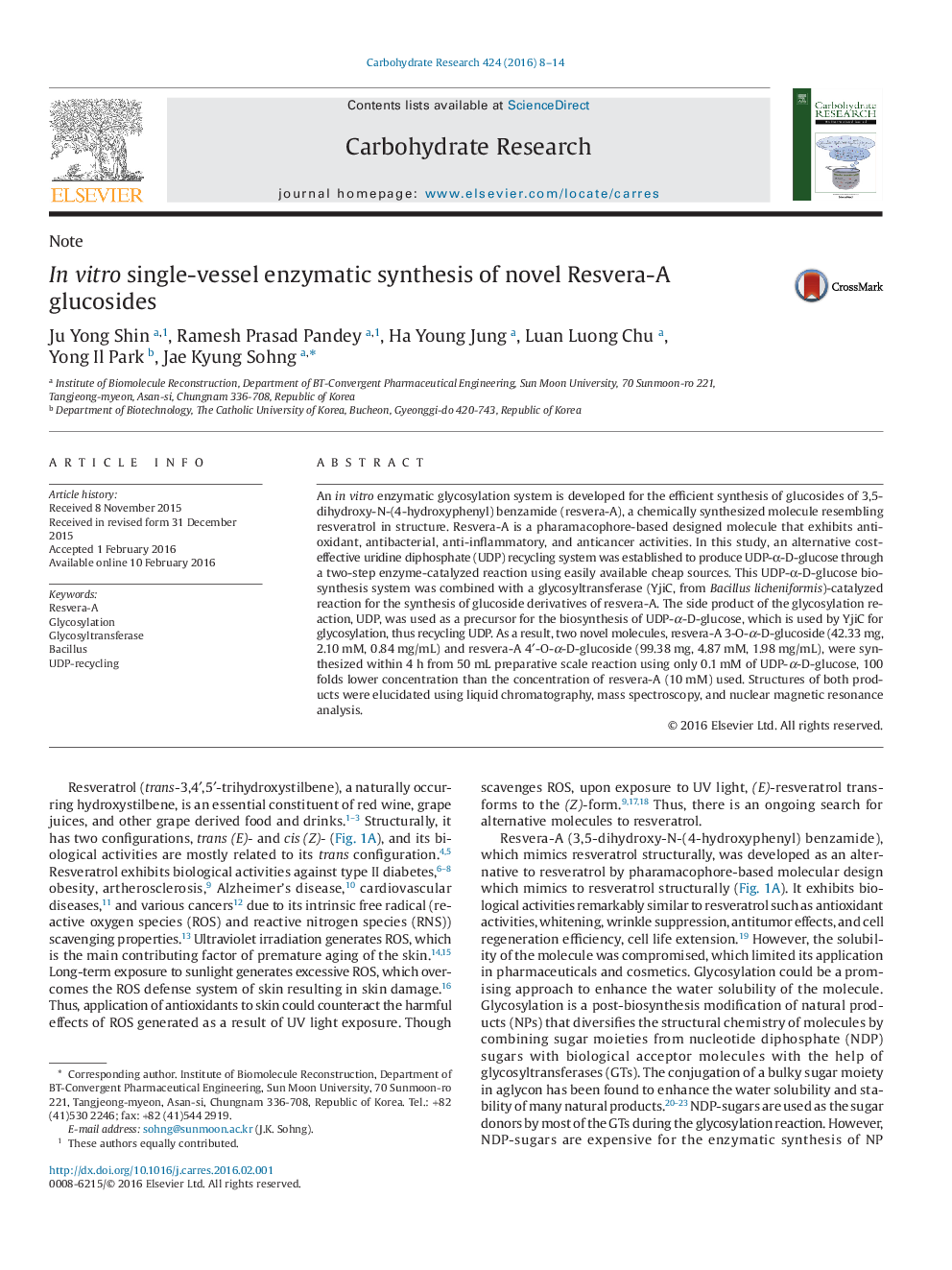| Article ID | Journal | Published Year | Pages | File Type |
|---|---|---|---|---|
| 1390094 | Carbohydrate Research | 2016 | 7 Pages |
•An in vitro enzymatic glycosylation system is combined with UDP recycling system.•Cost-effective UDP recycling system was established to produce UDP-α-D-glucose.•Instant removal of UDP enhanced catalytic activity of GT and yield of products.•Hundred fold lower concentration of UDP-α-D-glucose used than acceptor substrate.•Two novel resvera-A glucosides were produced in practical quantities.
An in vitro enzymatic glycosylation system is developed for the efficient synthesis of glucosides of 3,5-dihydroxy-N-(4-hydroxyphenyl) benzamide (resvera-A), a chemically synthesized molecule resembling resveratrol in structure. Resvera-A is a pharamacophore-based designed molecule that exhibits anti-oxidant, antibacterial, anti-inflammatory, and anticancer activities. In this study, an alternative cost-effective uridine diphosphate (UDP) recycling system was established to produce UDP-α-D-glucose through a two-step enzyme-catalyzed reaction using easily available cheap sources. This UDP-α-D-glucose biosynthesis system was combined with a glycosyltransferase (YjiC, from Bacillus licheniformis)-catalyzed reaction for the synthesis of glucoside derivatives of resvera-A. The side product of the glycosylation reaction, UDP, was used as a precursor for the biosynthesis of UDP-α-D-glucose, which is used by YjiC for glycosylation, thus recycling UDP. As a result, two novel molecules, resvera-A 3-O-α-D-glucoside (42.33 mg, 2.10 mM, 0.84 mg/mL) and resvera-A 4ʹ-O-α-D-glucoside (99.38 mg, 4.87 mM, 1.98 mg/mL), were synthesized within 4 h from 50 mL preparative scale reaction using only 0.1 mM of UDP-α-D-glucose, 100 folds lower concentration than the concentration of resvera-A (10 mM) used. Structures of both products were elucidated using liquid chromatography, mass spectroscopy, and nuclear magnetic resonance analysis.
Graphical abstractFigure optionsDownload full-size imageDownload as PowerPoint slide
